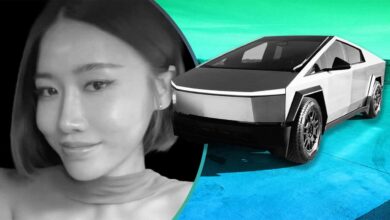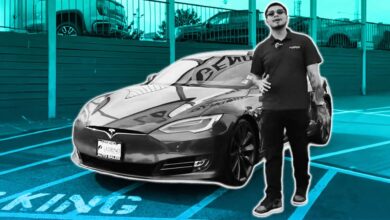Texas Politicians Warn Tesla: Robotaxis May Be Premature

The Tesla Robotaxi launch on Sunday, June 22, has been a long time coming. After a decade of promises, the automaker seems finally ready to deploy its self-driving taxis in Austin, with riders flaunting their early access invites on social media platforms.
But a full-scale rollout is still a long way off. Major hurdles remain, including a request from Texas lawmakers, who want Tesla to comply with a state law that’s set to take effect later this year. That, however, doesn’t seem to be slowing things down.
Welcome to the Friday edition of Critical Materials, your daily round-up of news and events shaping the world of electric cars and technology.
Also on our radar today: new research from the Rhodium Group highlights how the U.S. has essentially surrendered to China in battery manufacturing. Plus, auto industry groups in Brazil are alarmed by the surge of affordable Chinese EVs entering their market and are now evaluating Trump-style tariffs.
30%: Texas Lawmakers Seek To Delay Tesla Robotaxi Launch

Photo by: Tesla
“If you need a geofence area, you don’t have real self-driving,” Elon Musk said in 2019. Granted, so much has happened between that year and now, so digging up old comments might seem pointless.
But it’s worth noting that this pattern of overpromising and underdelivering is getting more and more obvious with Tesla. The robotaxi launch on Sunday will indeed be in a geofenced area, limited to the safest and most predictable streets of Austin. The initial rollout is expected to involve only 10-20 Model Ys.
Meanwhile, the Texas Legislature recently approved a revision to its autonomous vehicles operations framework, getting it more in line with the basic safety guardrails that other states also require. This revised set of rules will go into effect on Sept. 1.
As per those new rules, the autonomous vehicles should be:
- Capable of operating in compliance with state traffic laws.
- Equipped with a recording device.
- Compliant with federal law, including federal motor vehicle safety standards.
- Capable of achieving a minimal risk condition if the automated driving system is rendered inoperable.
- Registered, titled and insured under Texas law.
Here’s what the Democratic lawmakers added:
As members of the Austin delegation in the Texas Senate and Texas House of Representatives, we are formally requesting that Tesla delay autonomous robotaxi operations until the new law takes effect on September 1, 2025.
We believe this is in the best interest of public safety and building public trust in Tesla’s operations.
If Tesla opts to proceed with the June 22, 2025, launch date, we request that you respond to this letter with detailed information demonstrating that Tesla will be compliant with the new law upon the launch of driverless operations in Austin.
Nonetheless, if social media posts are any indication, the launch is taking place as scheduled.
Not without some concerns, however. A brand-new Model Y equipped with Tesla’s latest Full Self-Driving (FSD) software—the same software that will guide the robotaxis—was seen violating a Texas traffic law just last week.
In a test conducted by The Dawn Project—which is known for being fiercely critical of FSD—the EV failed to stop for a school bus flashing yellow lights, despite the bus having two stop signs clearly extended. The Model Y then struck a child-sized dummy.
Critics on social media have pushed back, arguing the dummy was introduced too abruptly for any car to reasonably stop in time. But the car’s failure to stop at two plainly visible stop signs is a straightforward violation of traffic law.
By comparison, look at this footage of a Waymo braking just milliseconds before nearly hitting a runaway dog. The dog darted into the street in almost the same way the dummy was introduced in front of the Tesla. The Waymo stopped. The Tesla didn’t.
Waymo relies on a far more robust sensor suite, including multiple lidars, radars, and cameras. Tesla, by contrast, uses cameras only. Which again raises the uncomfortable question of how these camera-only Model Ys will handle sudden road interruptions and the countless edge cases that vehicles are subjected to in the non-geofenced world.
60%: U.S. EV Battery Plants At Risk Amid Policy Reversal

Ford LMR Battery Cell Production
Photo by: Ford
The U.S. is currently on track to meet its EV battery demand through 2030, according to a new study by independent research firm Rhodium Group. If all projects that have broken ground or are under construction proceed as planned, the country will have enough capacity to meet local demand and then some.
This surge in battery investment was driven by the Inflation Reduction Act, passed under the Biden administration to reduce U.S. reliance on China and boost domestic energy independence. But a rollback of these policies under a second Trump administration could jeopardize thousands of jobs tied to these factories.
If EV sales decline, automakers and suppliers could be left with dozens of battery plants producing cells for a market that’s much smaller. And even if a future administration attempts to put the EV market back not track, companies and investors will be hesitant to play ball. Nobody wants to build a business around policies that keep changing every three or four years.
90%: Brazil Alarmed By Affordable Chinese EVs

The Rhodium Group study also notes that China is producing enough EVs and batteries for its domestic market, and for much of the rest of the world. That dynamic is already playing out in dozens of countries across Europe, South America and Southeast Asia, where a flood of affordable Chinese EVs has rapidly accelerated adoption. But it’s also setting off alarm bells within local auto industries.
As Reuters reported on Friday, Brazil is quickly becoming a flashpoint in China’s global EV expansion. With relatively low import tariffs, the country has become a prime target for automakers like BYD, which is capitalizing on the opportunity, right down to using its own cargo ships to ferry tens of thousands of low-cost EVs to Brazilian ports.
Now, industry leaders in Brazil are pushing back. They are weighing new tariffs and exploring incentives to nudge Chinese automakers into building local factories and creating jobs, rather than simply flooding the market with imports.
100%: Should Congress Keep Battery Manufacturing Credits?

Photo by: Ford
The U.S. can continue to be a gas truck and SUV country as much as it wants. But there’s a strong case to keep the battery factories.
It’s not just EVs that need the lithium-ion batteries; hybrids, plug-in hybrids and grid-stabilizing energy storage systems need them too. Above all, they promise to supercharge the U.S. economy with thousands of jobs and cutting-edge battery tech that would reduce the country’s reliance on China.
Should the Senate rethink its aggressive anti-climate efforts and preserve battery manufacturing incentives that have kickstarted a domestic EV supply chain? Or is it worth scrapping them to support tax cuts and policies that promote greater fossil fuel use? Even if that means dirtier air to breathe and a hotter planet?
Have a tip? Contact the author: suvrat.kothari@insideevs.com
Source link


